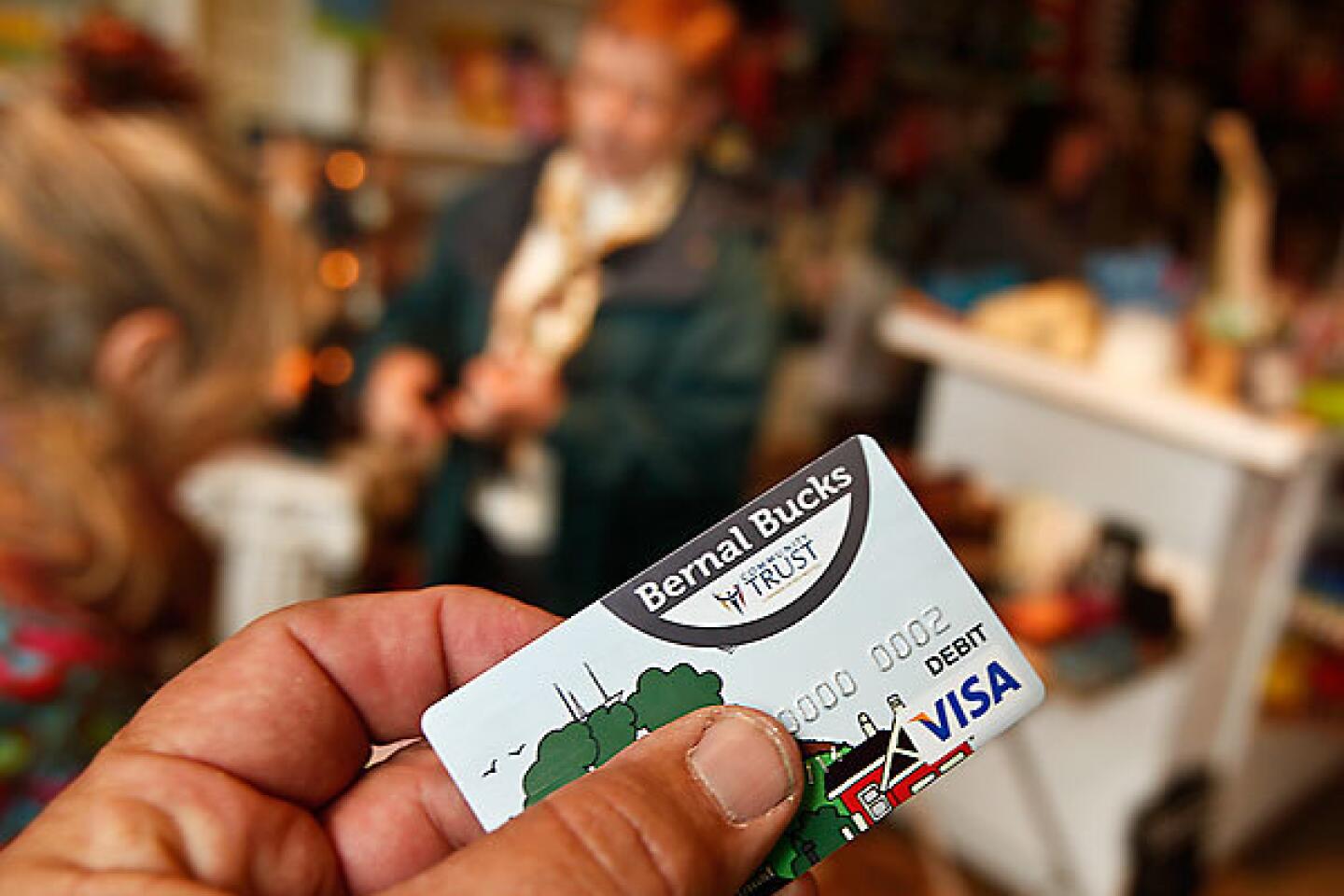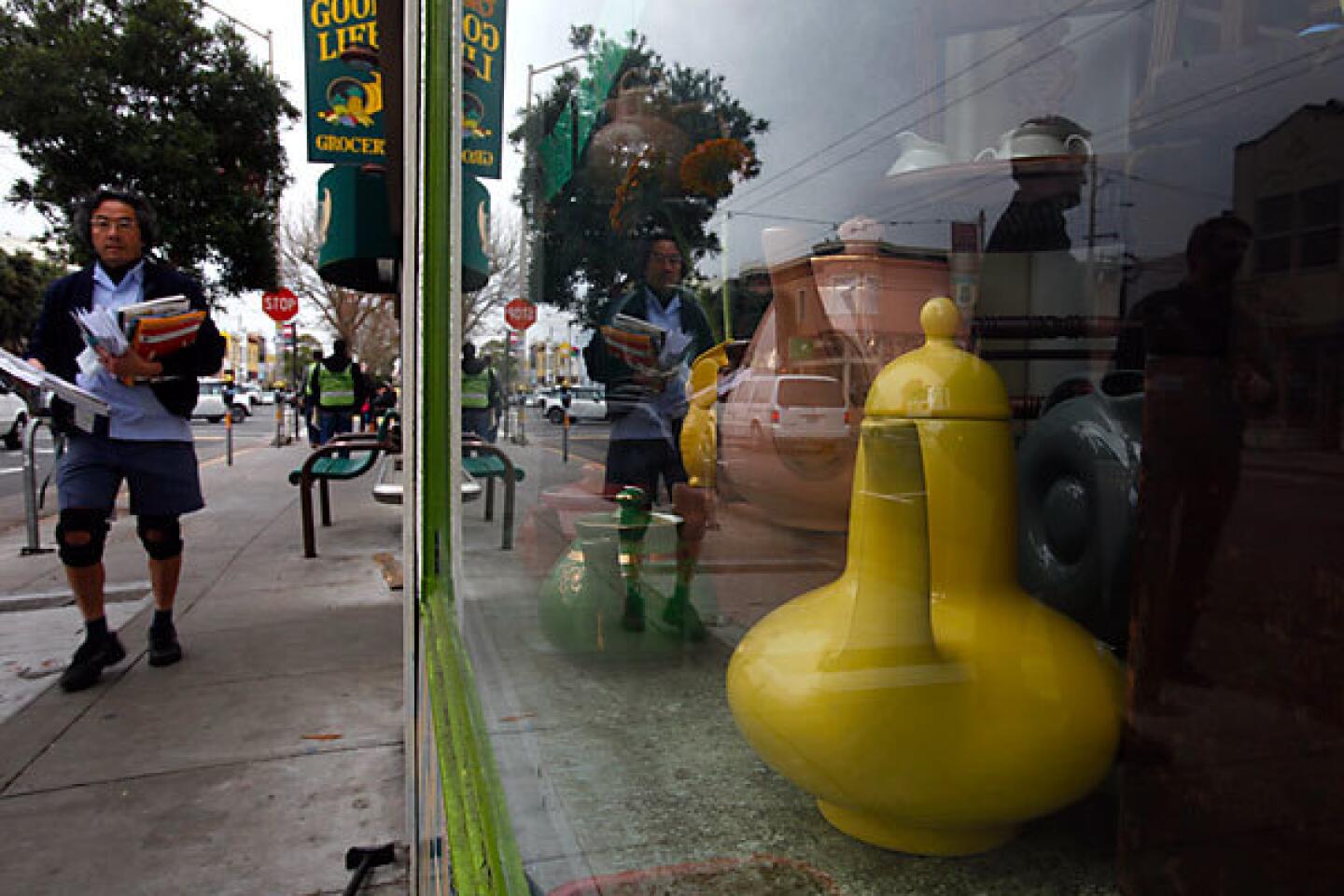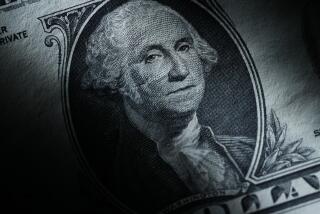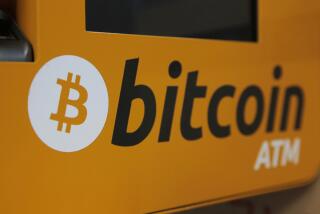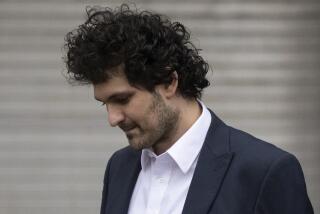Unified by the coin of their realm
Coiled around a wind-swept hill near this city’s lively Mission District, Bernal Heights takes an almost cult-like pride in being insular.
With a butcher, grocer, bookstore and bakery, the neighborhood provides the basics. When you add to that some unique establishments — like an organic baby food outlet and a knife-sharpening venture offering classes in Japanese whetstone techniques — many residents say they rarely feel the urge to leave.
“It’s this weird little borderline utopia,” said Ken Shelf, 42, who runs a combination movie-rental and succulent store here. His home, business, favorite shops and kids’ school are all within a five-block radius.
Now, Bernal Heights is taking its experiment in localism one step further, adopting what is believed to be the country’s first “complementary currency” in the form of a debit card.
Designed by two neighborhood loyalists versed in technology and banking, the Bernal Bucks card allows residents to pay for their purchases while earning credits every time they swipe it at any of the two dozen area businesses that have signed on since June.
Accrued as frequent-flier miles are, the bucks can be printed as coupons and used toward future purchases. Cardholders also can donate their accrued “wealth” to neighborhood nonprofits.
“The convenience of being able to use it anywhere and having your money increase in value because it’s giving back to the community, those are really important things for Bernal residents to plug into,” said Rachel Ebora, executive director of the Bernal Heights Neighborhood Center, which has started to pull in program-related donations.
::
The idea of complementary currencies — which enhance but don’t replace an official mode of exchange — is not new.
Massachusetts’ Berkshire region has Berkshares, colorful bills bought with dollars at a slight discount. In California, Davis Dollars (adorned with a bicycle) have circulated for a few years. And two Marin County communities recently began minting $3 tokens at a discount that are handed out as change. They can be spent at participating merchants or pocketed as souvenirs.
Other currencies that encourage local trade or barter have sprung up in Sweden, Japan, Kenya, Venezuela and Britain, among other countries.
The downside of most of the programs, advocates concede, is that consumers have to carry two kinds of cash. And the most-engaged merchants often get saddled with registers full of funny money.
So Bernal residents Guillaume Lebleu and Arno Hesse worked out an electronic solution.
They met at an “unconference” on banking innovation in 2009. Both had been pondering how communities could bolster their economic health in the face of the national downturn. After hosting a forum to toss around ideas, they began distributing $5 bills to merchants marked with Bernal Bucks stickers.
FOR THE RECORD:
An earlier version of this article misspelled Arno Hesse’s last name as Hess in some references.
Residents who reused the bills locally, in what Lebleu called “probably the neighborhoodiest neighborhood in San Francisco,” got a token of appreciation: a crisp apple or an upgrade to a larger coffee.
The stickers raised awareness, Hesse said, but their potential was limited. Fortunately for Bernal, he and Lebleu had the background to take it to a higher level.
The soft-spoken Lebleu, 36, had developed financial software and long pondered the ways technology was “changing money itself and, with it, our communities and society.”
The 50-year-old-Hesse was a former Union Bank executive who had been involved in the Slow Money movement, which urges resident investment in the local food supply — with often unconventional returns. (His own investment in a Vacaville organic farm earns him a steady supply of eggs.)
Bernal Bucks is the pilot program of a company Hesse and Lebleu formed last year to promote community rewards networks.
They are funding the effort out of their own pockets. Without going into details, Hesse said that he and Lebleu “expect to make a living — not a killing — as the program gets adopted by more communities.”
Branded with a cheerful image of Bernal’s iconic hill, their Visa debit card is issued by the local Community Trust Credit Union and aims to make patronizing neighborhood stores simpler: Residents can earn rewards or make charitable donations without having to keep track of stickers on their bills or carry a passel of buy-nine-and-get-the-10th-free punch cards.
Hesse and Lebleu track the purchase patterns of Bernal Bucks cardholders — who number in the hundreds — online and check in face-to-face with merchants.
One recent day, they stopped in at Succulence, Shelf’s video and succulent store.
After movie rentals began to decline, Shelf tacked a plant business onto the back of the shop two years ago. In addition to succulents, the store sells ceramic and glass planters handcrafted by local artists and offers classes on building terrariums and vertical gardens.
An early backer of Bernal Bucks, Shelf said the “economic implosion of 2008” prompted him to spend more at local businesses and urge others to do the same. “It’s kind of cool,” he said, “knowing that you’re keeping people’s families going.”
::
Josh Donald, owner of Bernal Cutlery, is another believer.
“I love the idea of a local currency,” said Donald, who like others here moved his accounts from a corporate bank to the credit union while signing up for the card.
But Donald is still waiting for a customer to present him with a Bernal Bucks coupon. That may be because shoppers are saving up their credits.
Among them is Brigitte Phipps, a young mother who runs her husband’s Chiropractic” href=”https://www.latimes.com/topic/health/medical-specialization/chiropractic-HEMSP000018.topic”>chiropractic office. She has accrued $100 in Bernal Bucks — her 5% return on $2,000 in purchases from the Good Life Grocery — but has yet to decide where to spend them or whether to give them away.
“I think it’s pretty awesome,” she said. “I don’t leave the hill.”
As for the nonprofit donations, Hesse and Lebleu said they are building slowly.
Some cardholders give a fixed percentage of their bucks to the elementary school’s PTA” href=”https://www.latimes.com/topic/education/pta-OREDU0000168.topic”>PTA, while others have chosen the Bernal Heights Neighborhood Center, which offers programs for low-income youth and seniors.
As six elderly women in black top hats tap-danced in the community room recently, Ebora, the executive director, showed off her brand-new Bernal Bucks card. (According to credit union manager Carlos Brenes, 20 or so users sign up every month.)
Last month, she said, the center accrued $50 in Bernal Bucks donations. The amount may seem small, but Ebora said it would pay for a month of hot lunches for one senior.
“Any little bit helps, especially with the decline in public funding,” she said.
The program taps into a growing desire to transact business on a more intimate level.
“People are recognizing that dollars are basically scarce right now,” said Janelle Orsi of Oakland’s Sustainable Economies Law Center. But even when you don’t have the real dollars, she said, you still have something of value.
Orsi said she often is approached by clients seeking to pay for legal services in unconventional ways. In exchange for recent advice to a food cooperative south of San Francisco, for example, Orsi was offered lessons in “bird language.”
“Money is so weird,” she said. “It only has value if people are willing to accept it.”
More to Read
Start your day right
Sign up for Essential California for news, features and recommendations from the L.A. Times and beyond in your inbox six days a week.
You may occasionally receive promotional content from the Los Angeles Times.

